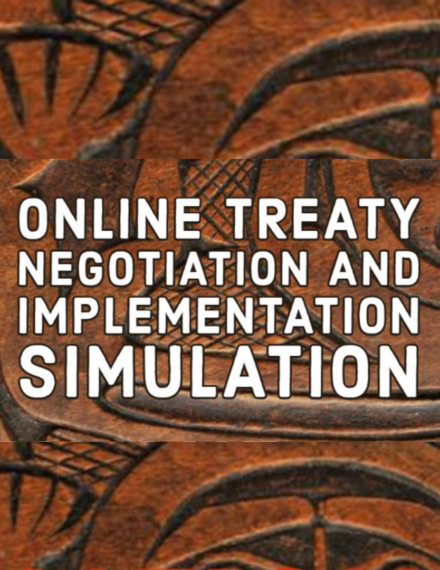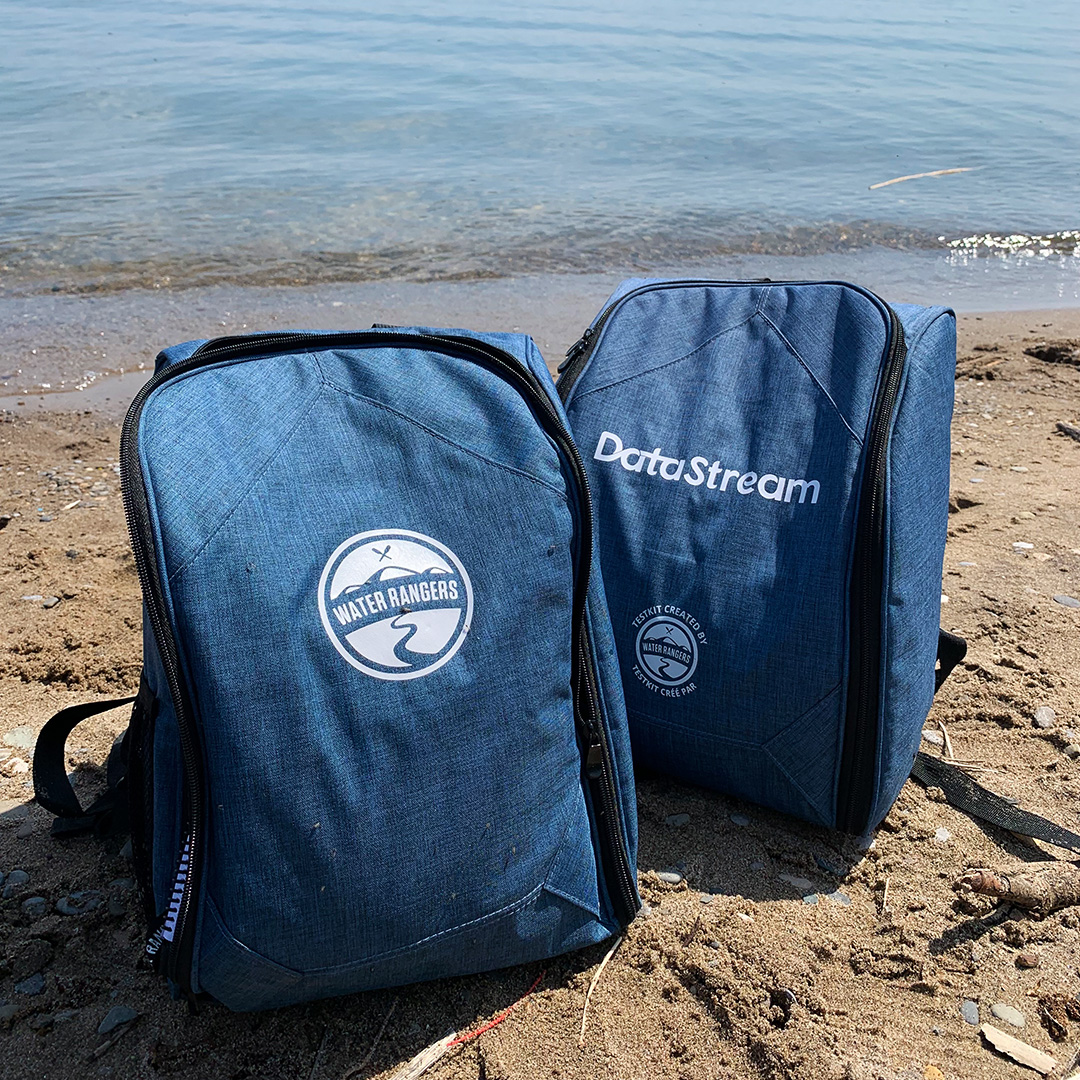
The Watershed Reports give a freshwater health score for each watershed in Canada by assessing four key indicators: water quality, hydrology, fish, and benthic invertebrates. The Reports build on the 2017 and 2020 Watershed Reports published by World Wildlife Fund Canada.
DataStream was proud to contribute data to these vital reports. Below are some of the DataStream team’s takeaways.
1. Open data is on the rise, but there’s still work to do
One of the biggest successes since the last Watershed Report in 2020 is the significant increase in open access data. DataStream has grown immensely in the last few years. In 2020, DataStream held water quality data from 92 organizations monitoring in the Mackenzie River Basin, Lake Winnipeg watershed, and the Atlantic provinces. Fast forward to 2025, and DataStream now holds data shared by over 300 organizations from coast to coast to coast.
This geographic expansion has made a huge difference in understanding the quality of Canada’s freshwater. The 2025 Watershed Reports analyzed 20 million data points in order to assess national water quality, and 78% of this data came from DataStream.
However, there’s still more to be done. Water Rangers could not assess 75.6% of subwatersheds in Canada due to insufficient data. A lot of data in Canada is still hidden away on private servers or locked behind paywalls. This makes it impossible to get a full picture of Canada’s freshwater health.
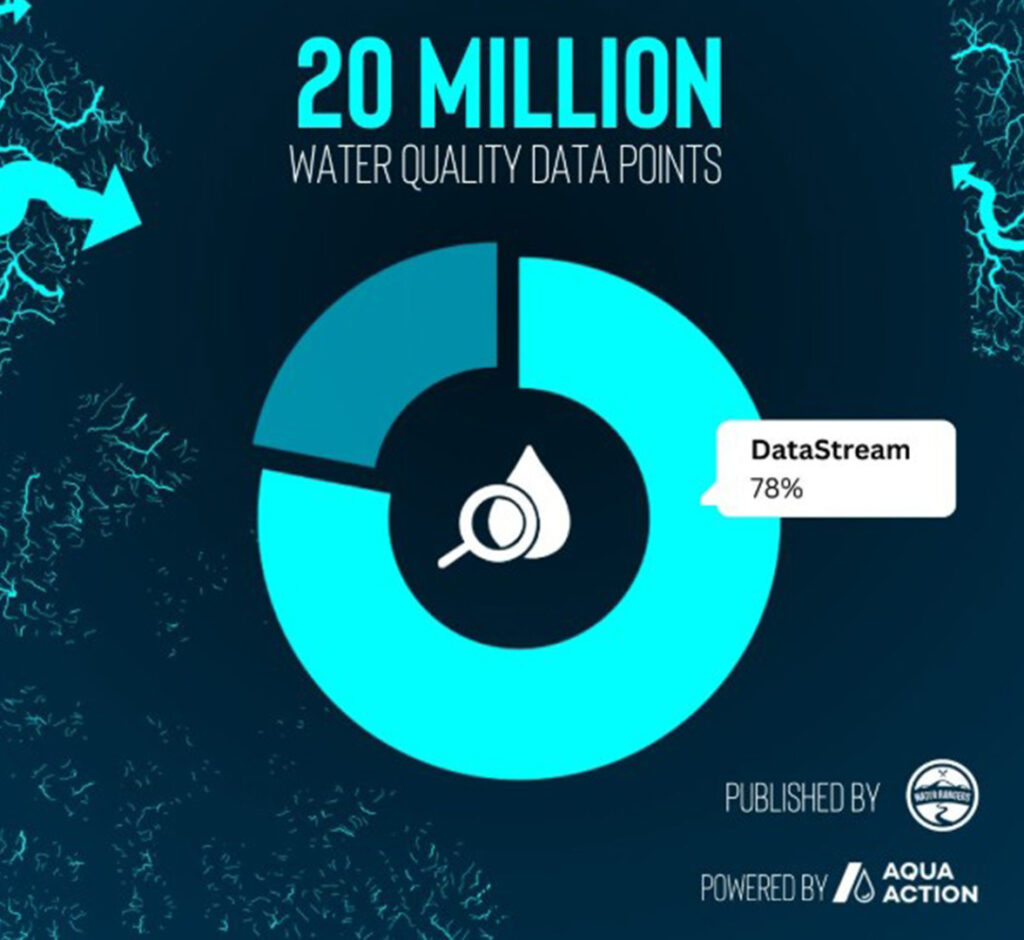
Image source: https://www.watershedreports.ca/
2. Community-based monitoring is more important than ever
To create the Reports, Water Rangers gathered water data from government agencies, Indigenous programs, community monitoring groups, NGOs, private consultants, industry, and researchers. Each plays an important role in assessing freshwater health; however, community monitoring groups are uniquely positioned to spot changes and patterns in their watersheds.
Over 60% of the data used to create the Watershed Reports was sourced from community monitoring groups. Community groups can ensure that watersheds are assessed in remote or under-monitored areas. There are hundreds of community monitoring groups in Canada collecting data in their local lakes, rivers, and wetlands, and their efforts are vital for assessments like the Watershed Reports.
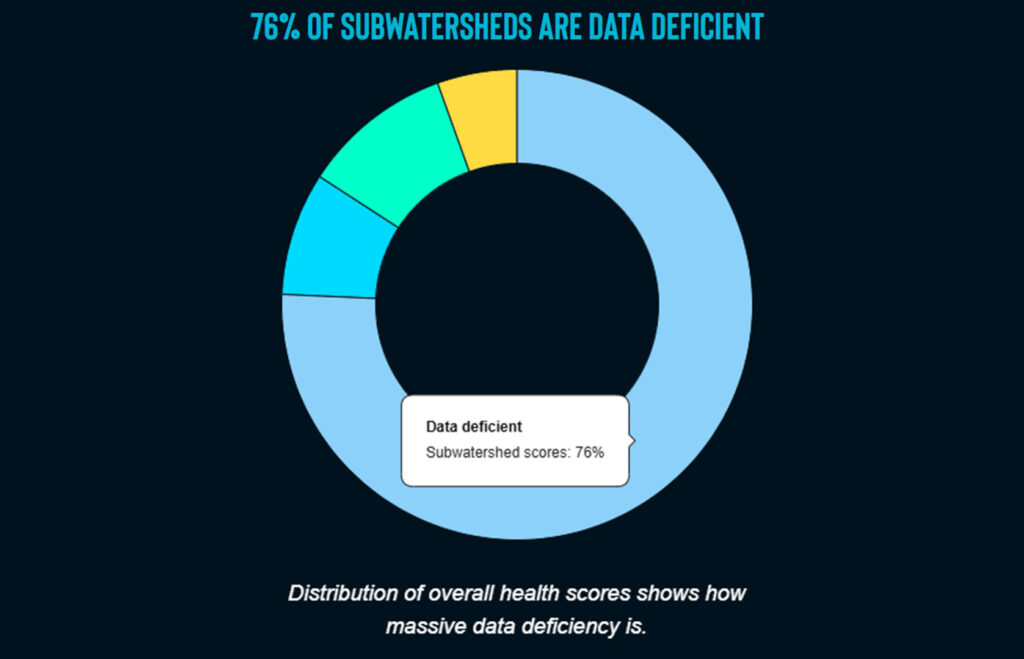
Image source: https://www.watershedreports.ca/
3. National assessments are crucial for freshwater protection
The 2025 Watershed Reports emphasize that national freshwater assessments are essential. We cannot protect what we don’t understand. These reports are more than just a snapshot—they provide a science-based framework for evaluating freshwater health across Canada. Without this unified approach, our understanding of the state of our watersheds remains fragmented.
The Reports point to where water data is lacking. They give specific, tangible actions to improve freshwater health in Canada. And importantly, the reports celebrate our wins! Highlighting successes is just as important as looking at what needs improvement, and the 2025 Watershed Reports do both equally well.
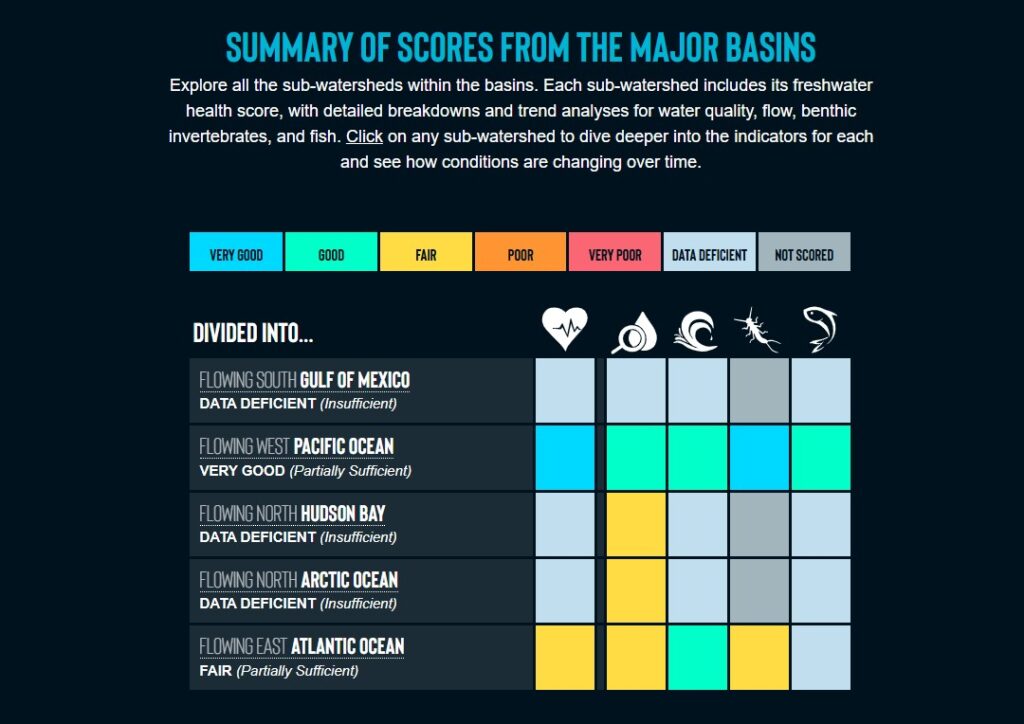
mage source: https://www.watershedreports.ca/
Conclusion: We need a unified framework for a healthier water future
The 2025 Watershed Reports show we can make significant strides in protecting Canada’s freshwater. A unified, science-based framework for assessing freshwater health is crucial for meaningful progress. With standardized data and greater transparency, we can make informed decisions that benefit communities and the environment.
Canada’s watersheds are vast and diverse, but they are all connected. For more information and to get involved, visit the Watershed Reports’ Take Action page here.


